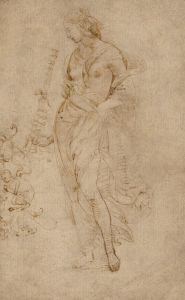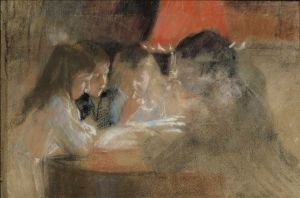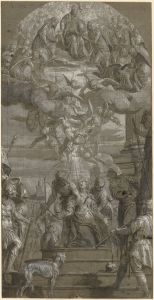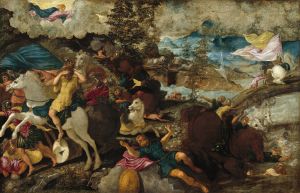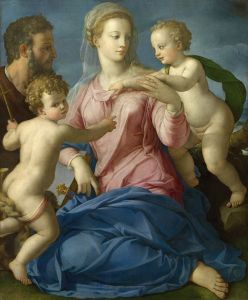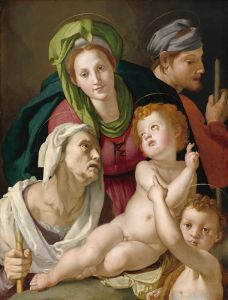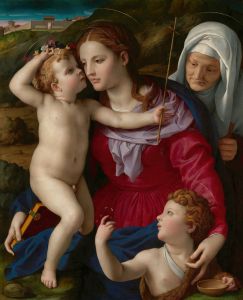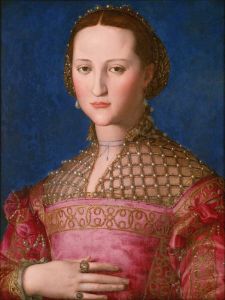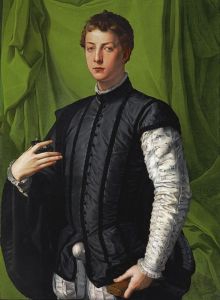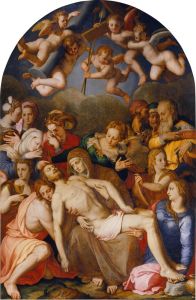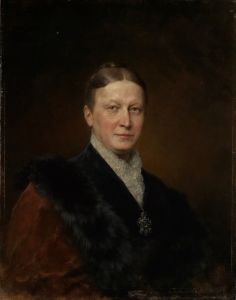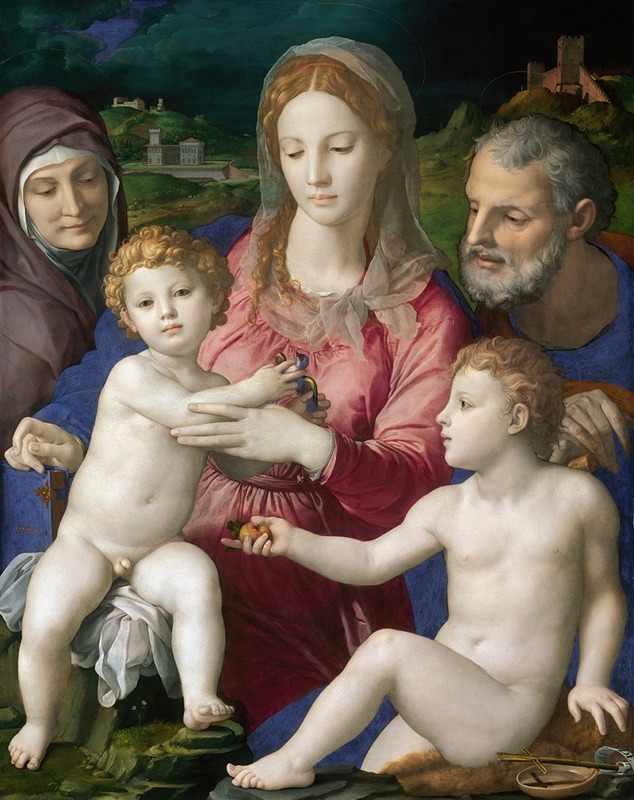
Holy Family with St. Anne and the Infant St. John
A hand-painted replica of Agnolo Bronzino’s masterpiece Holy Family with St. Anne and the Infant St. John, meticulously crafted by professional artists to capture the true essence of the original. Each piece is created with museum-quality canvas and rare mineral pigments, carefully painted by experienced artists with delicate brushstrokes and rich, layered colors to perfectly recreate the texture of the original artwork. Unlike machine-printed reproductions, this hand-painted version brings the painting to life, infused with the artist’s emotions and skill in every stroke. Whether for personal collection or home decoration, it instantly elevates the artistic atmosphere of any space.
Holy Family with St. Anne and the Infant St. John is a painting attributed to the Italian Mannerist painter Agnolo Bronzino (1503–1572). Bronzino was a prominent artist of the Florentine school and is best known for his refined portraits and religious compositions, which often exhibit the elegance and sophistication characteristic of Mannerism.
This artwork depicts a sacred scene featuring the Holy Family—comprising the Virgin Mary, the Christ Child, and Saint Joseph—alongside Saint Anne and the infant Saint John the Baptist. The composition reflects the Mannerist style, with its emphasis on idealized figures, graceful poses, and a polished, almost sculptural quality. The figures are arranged in a harmonious yet dynamic grouping, showcasing Bronzino's mastery of anatomy and his ability to convey a sense of serenity and divine grace.
The painting is notable for its meticulous attention to detail and the use of vibrant, luminous colors, which are hallmarks of Bronzino's technique. The artist's skill in rendering textures, such as the softness of the fabrics and the smoothness of the skin, is evident throughout the work. The expressions and gestures of the figures convey a sense of intimacy and spiritual connection, inviting the viewer to contemplate the sacred nature of the scene.
As with many of Bronzino's religious works, this painting reflects the influence of his teacher, Jacopo Pontormo, while also showcasing his own distinctive style. The composition demonstrates Bronzino's ability to balance complexity and clarity, creating a visually engaging and thematically profound image.
The exact date of the painting's creation is not definitively known, but it is generally attributed to Bronzino's mature period, during which he produced some of his most celebrated works. The painting's provenance and current location are also not widely documented in available sources.
Due to the limited information about this specific artwork, further details regarding its commission, historical context, and reception remain unclear. However, it stands as an example of Bronzino's contribution to the religious art of the Italian Renaissance and his role in shaping the Mannerist aesthetic.





